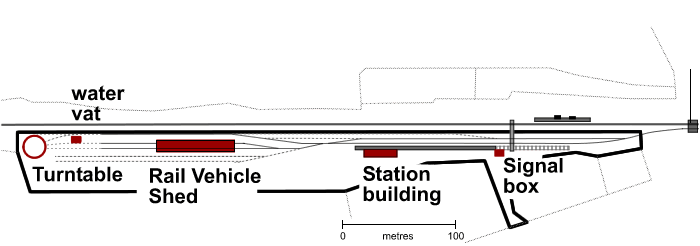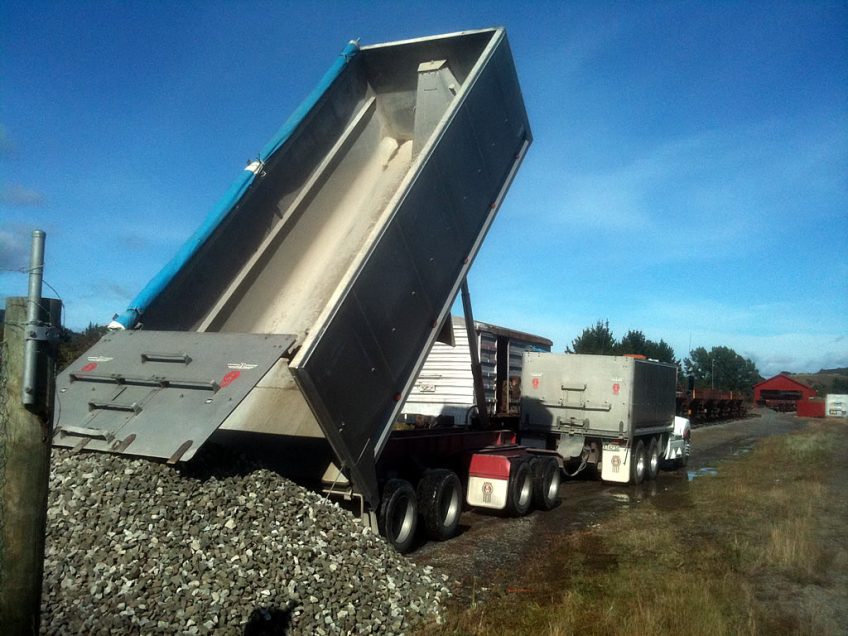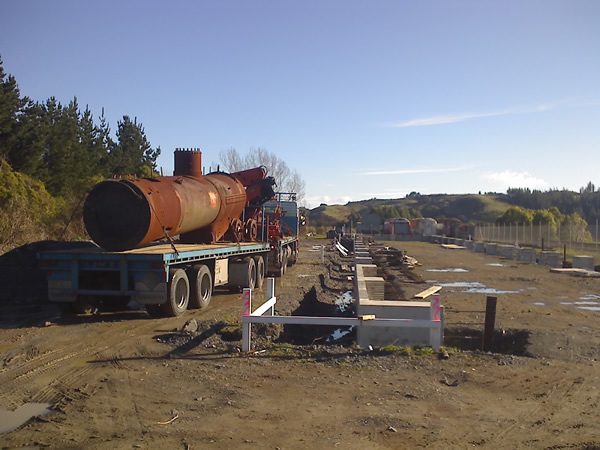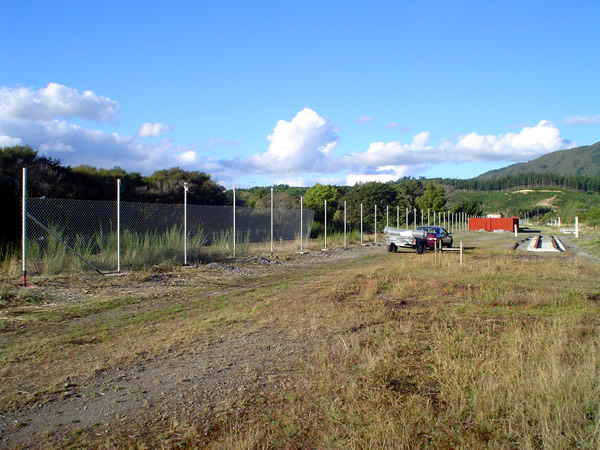Major ballast sponsorship received
On 8 and 9 March 2011 some 320 cubic metres of ballast was delivered to our Maymorn site. Holcim (New Zealand) Limited donated the ballast from their Kiwi Point Quarry, Wellington, and Pelorus Trust covered the cost of transport. The ballast will be used with mainline and loop track construction at the Trust’s Maymorn station. This is a valuable addition to previous deliveries of ballast in 2010, sponsored by the Rail Heritage Trust of New Zealand.



